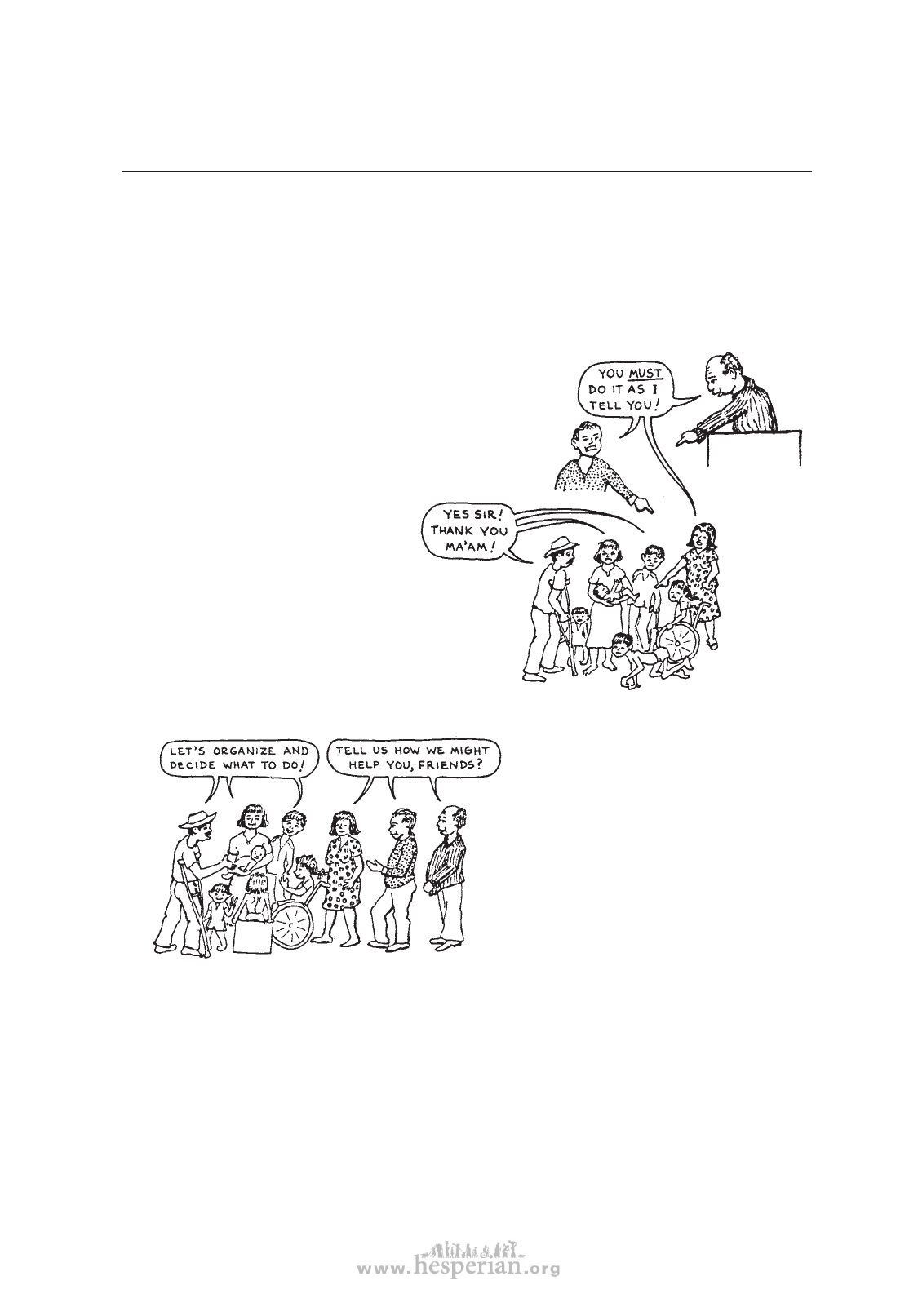
Starting Village-Based
Rehabilitation Activities
45CHAPTER
405
TOP-DOWN OR BOTTOM-UP?
Around the world today there are many examples of what have sometimes been
called ‘community-based rehabilitation programs’. Some of these programs are ‘top
down’; others are ‘bottom up’.
Top-down: Chain of command
Top-down programs or activities
are mostly planned, started,
organized, and controlled from
outside the community: by
government, by an international
organization, or by distant
‘experts’. And the local
leaders are usually persons
in positions of authority,
influence, or power.
LOCAL
SUPERVISOR
MINISTRY
OF HEALTH
LOCAL
TRAINER
Bottom-up: Equality in decision-making
Bottom-up programs or activities
are those that are largely started,
planned, organized, and controlled
locally by members of the
community. Much of the leadership
and direction comes from those
who need and benefit most from
the program’s activities. In brief, the
program is small, local, and
‘user-organized’.
Community participation is important to both top-down and bottom-up programs.
But it means something different to each:
In top-down programs, people are asked to participate only in ways that have already
been decided from above. For example, a decision might be made by a team of foreign
specialists that certain persons in each community be selected as ‘local supervisors’.
The local supervisors are taught several pre-decided ‘packages’ of cookbook-like
information. Each supervisor then instructs a given number of ‘local trainers’ (family
members of the disabled) how they ‘must train’ each particular disabled person. Thus
‘community participation’, from the viewpoint of the experts, means ‘getting people to
do what we decide is good for them’.